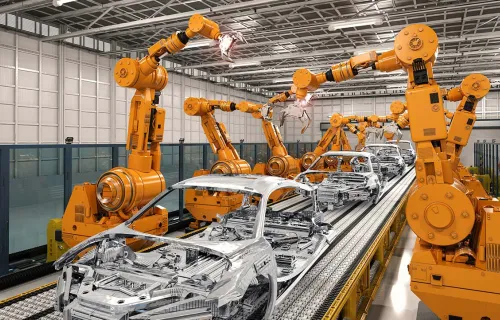Although not a new concept, robotic process automation (RPA) has generated a lot of hype in recent times as an enabler of business value. Of course, RPA is not about robots in the classic sense, but rather about software robots that execute processes quickly, reliably and with high quality and customer satisfaction.
Across the nearly 1,500 client executives we interviewed for the 2020 CGI Client Global Insights, automation/robotics was cited as the third top digital initiative. When asked how their organizations are progressing along the intelligent automation spectrum (from basic automation to artificial intelligence in automation), executives reported completing more RPA implementations and more investigations of artificial intelligence (AI) in automation compared to 2019.
The value of RPA
RPA is widely used as an enabler of efficiency, resiliency and digital transformation. In response to the pandemic, demand for RPA has accelerated to improve COVID-19 measures for hospitals, loan processing for banks, and savings initiatives for manufacturers, as examples. RPA also helps organizations:
- Gain flexibility to scale their virtual workforce based on demand
- Free up employees from unrewarding, routine tasks to focus on more strategic activities that require human judgment and complex decision-making
- Automate processes faster and less invasively with a low-code / no-code approach (where developers “drag and drop” visual blocks of code to design new apps)
- Reduce costs, without having to forego employees or new business opportunities, by streamlining, simplifying and automating time-consuming processes
Additionally, as my colleague Katharina Dubberke shares in her blog on hyper-automation, organizations increasingly are seeking to combine automation with advanced technologies like machine learning and AI to accelerate decision-making.
Key success factors
The number of intelligent automation technology providers continues to grow. Each offers fast ways to get started and the potential for quick wins. But, what are the key steps to ensuring a successful automation journey? We believe a first step is to choose a simple process for an RPA proof-of-concept (POC). Ask yourself, “What process has been a real thorn in our side?” The answer might be a good RPA candidate.
We also recommend creating a proof-of-value for your intelligent automation journey that is based on the following attributes and answers to key questions:
- Build a common understanding of what RPA means in your organization.
- Key questions: How does RPA relate to intelligent automation, hyper-automation and AI? How does it fit into your corporate vision and digitization strategy?
- Establish common goals in an integrated strategy. Automation initiatives can emerge from silos, making them particularly challenging to scale.
- Key question: How do you define success?
- Choose the right pilot: A pilot must be compelling to get buy in from management and employees.
- Key questions: What pain should the automation alleviate? Which processes are most suitable? Where does advanced optimization of the process make sense? How do you recognize the “low-hanging fruit”?
- Onboard the right stakeholders: Operational process knowledge resides with employees. Such knowledge must integrate with RPA without creating a sense that a role is being "automated away.” Additionally, business departments and IT must work together on an equal footing.
- Key questions: Who do you need to make your project successful? How can you convince these parties? What is the best distribution of tasks and responsibilities between business and IT?
- Set a strategy for scaling: The prerequisites for scaling a successful RPA pilot should be clear from the start. Early planning is needed to move from a pilot to an “RPA Factory” that optimizes process automations with a template-based, repeatable approach.
- Key questions: How should you collect RPA use cases (bottom-up or top-down)? How do you want to involve your employees? Do you want to build internal knowledge or rely on an outsourced solution? What does the ongoing operation of software robots require? What should the governance model look like?
Getting started with an Intelligent Automation Day
An Intelligent Automation Day workshop offers a structured way to plan the foundation, vision and first steps of your intelligent automation journey. Based on a preliminary analysis of pre-workshop questionnaires, these facilitated design-thinking sessions often include:
- A benchmarking of industry trends and technology developments
- An automation readiness assessment
- Inspiration and identification of potential pilot projects
- Definition of the first steps towards a successful pilot project
At CGI, we’ve used such workshops to help both public and private sector clients achieve quick wins in areas such as employee onboarding, invoice verification, and more.
Contact me to learn how we can help you identify and apply the right automation strategies and tools to achieve business outcomes. The only prerequisite is a conscious decision to begin the journey.






